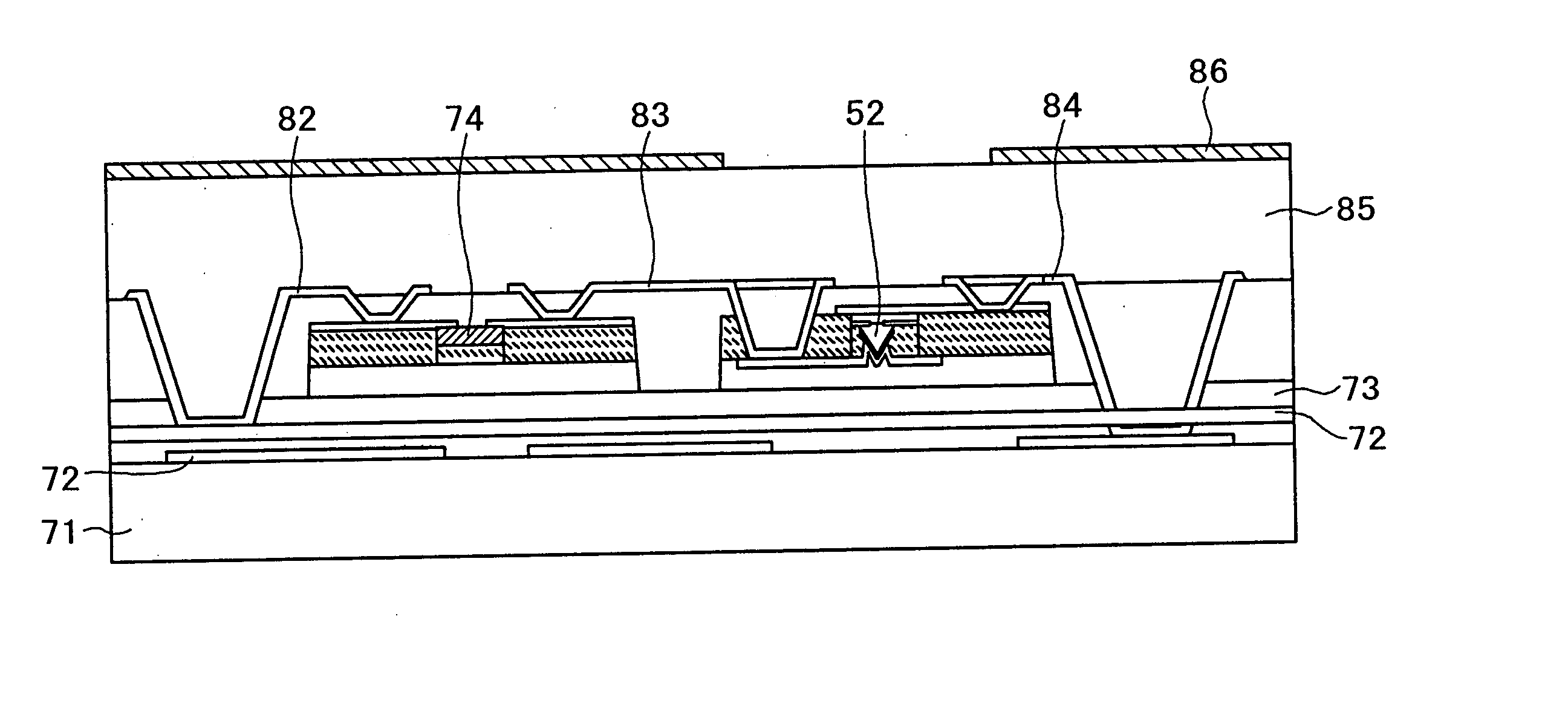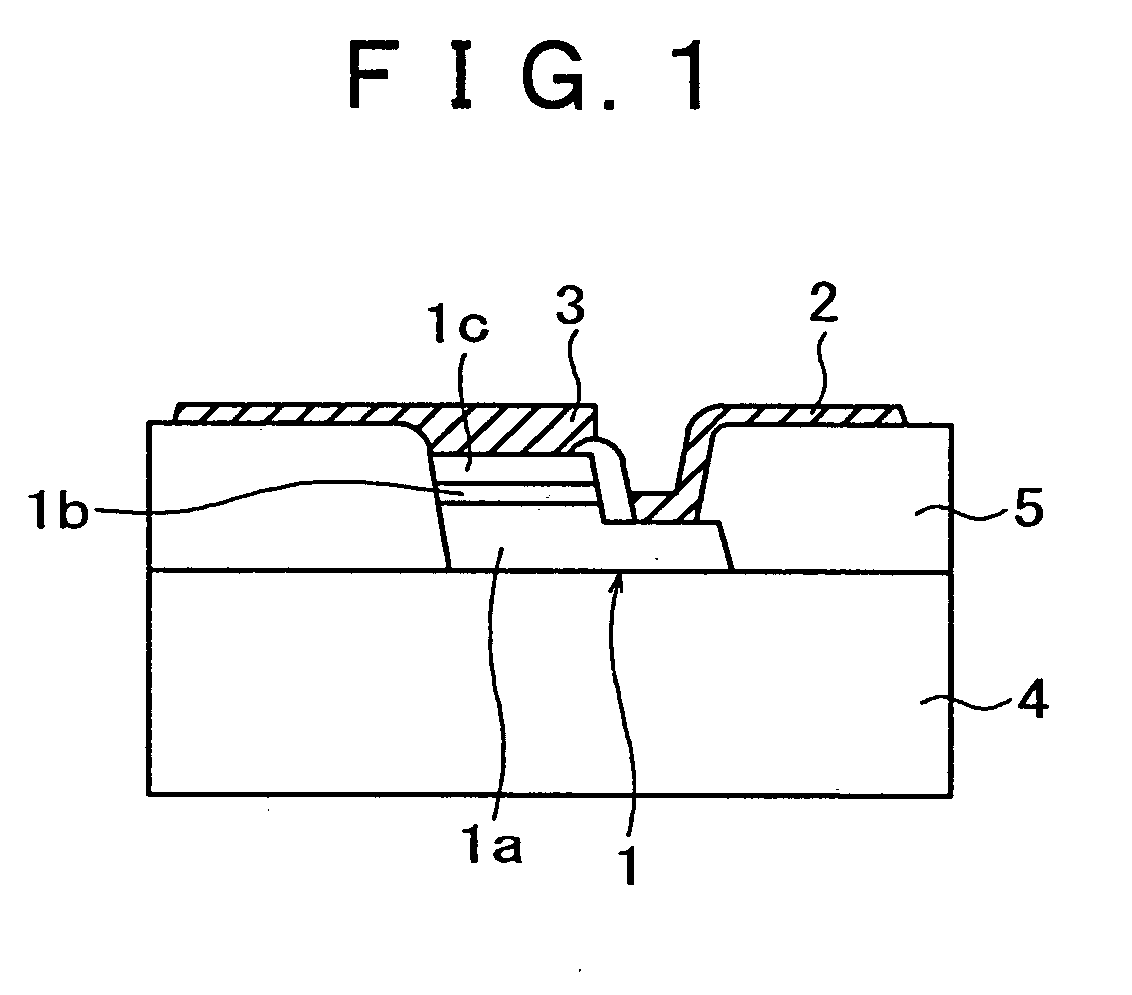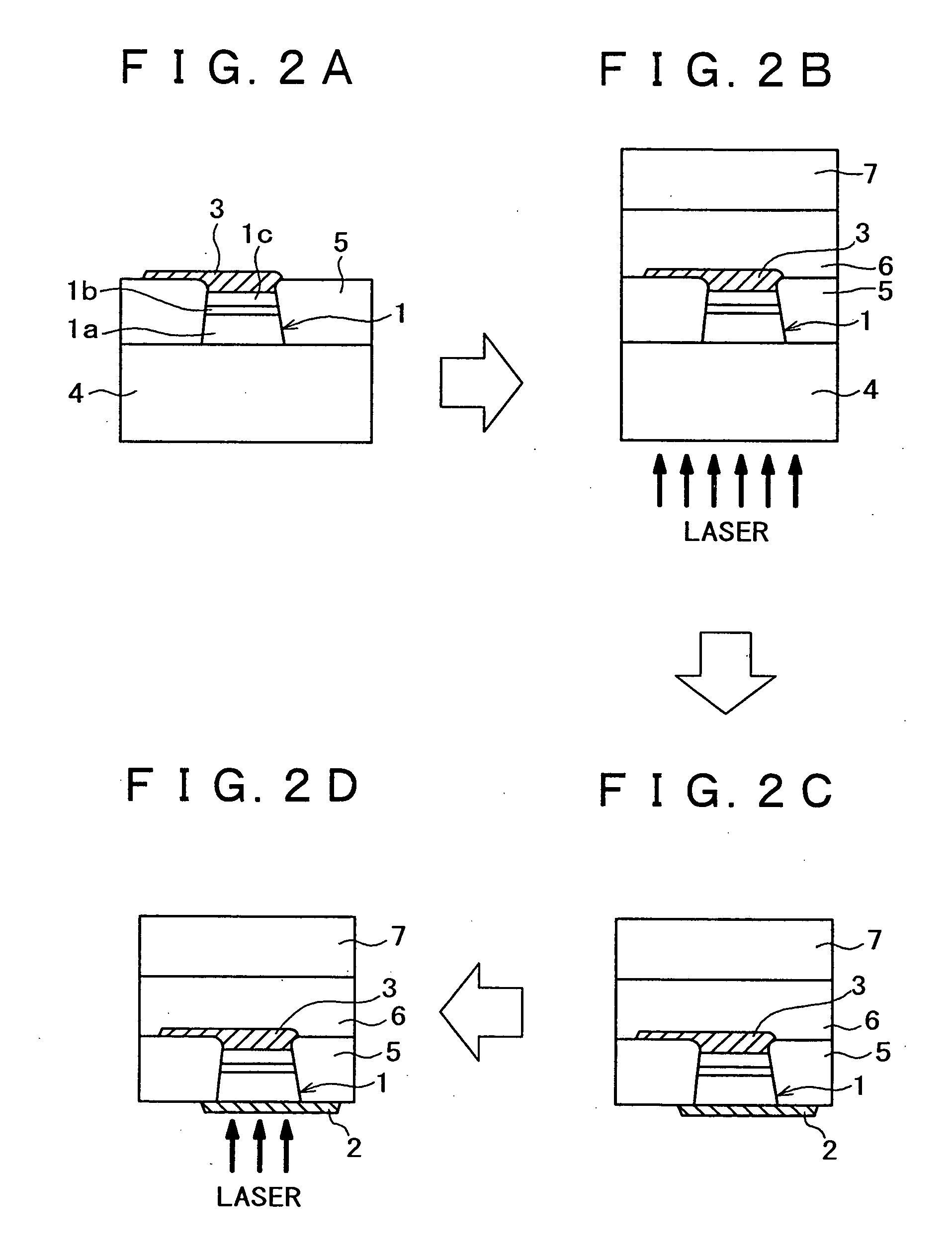Alloying method, and wiring forming method, display device forming method, and image unit fabricating method
a technology of display device and fabricating method, which is applied in the direction of identification means, instruments, semiconductor devices, etc., can solve the problems of thermal alloying process degrading of device characteristics, increasing production costs, and reducing throughput, and achieve excellent performance
- Summary
- Abstract
- Description
- Claims
- Application Information
AI Technical Summary
Benefits of technology
Problems solved by technology
Method used
Image
Examples
Embodiment Construction
[0056] Hereinafter, an alloying method, a wiring forming method, a display device forming method, and an image display unit fabricating method according to the present invention will be described with reference to the drawings.
[0057] Embodiments of the alloying method and the wiring forming method according to the present invention will be first described. In these embodiments, an electrode is alloyed with a micro LED representative of a semiconductor device by using the alloying method of the present invention.
[0058] As shown in FIG. 1, a micro LED 1 is composed of an n-cladding layer 1a, an active layer 1b, and a p-cladding layer 1c, wherein an n-electrode 2 is connected to the n-cladding layer 1a and a p-electrode 3 is connected to the p-cladding layer 1c.
[0059] In general, the n-electrode 2 and the p-electrode 3 are formed, as shown in FIG. 1, by forming an insulating layer 5 so as to cover the micro LED 1 on a GaAs substrate 4, and providing openings in portions, correspondi...
PUM
| Property | Measurement | Unit |
|---|---|---|
| temperature | aaaaa | aaaaa |
| time | aaaaa | aaaaa |
| frequency | aaaaa | aaaaa |
Abstract
Description
Claims
Application Information
 Login to View More
Login to View More - R&D
- Intellectual Property
- Life Sciences
- Materials
- Tech Scout
- Unparalleled Data Quality
- Higher Quality Content
- 60% Fewer Hallucinations
Browse by: Latest US Patents, China's latest patents, Technical Efficacy Thesaurus, Application Domain, Technology Topic, Popular Technical Reports.
© 2025 PatSnap. All rights reserved.Legal|Privacy policy|Modern Slavery Act Transparency Statement|Sitemap|About US| Contact US: help@patsnap.com



